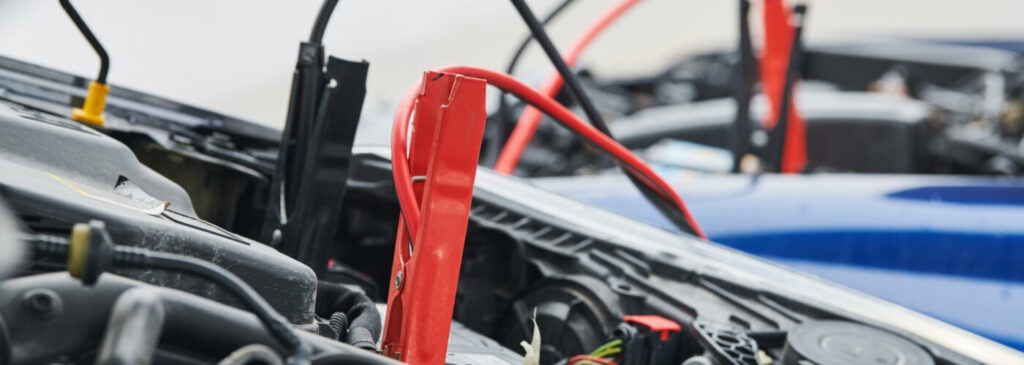Winter in Buffalo can be brutal, and it often takes a toll on car batteries. Waking up to a dead battery on a frosty morning can certainly throw a wrench in your day. But don’t worry—knowing how to properly jump-start your car can get you back on the road quickly and safely.
Arming yourself with the knowledge about safe jump-start procedures not only saves you time but also protects your car from damage. It’s all about being prepared with the right tools and following the correct steps. Whether it’s cold mornings or unexpected stalls, staying ready with these techniques can make all the difference.
By following some straightforward guidelines, you’ll be able to tackle the task with ease. This guide will walk you through everything from safety precautions to post-jump checks. Let’s ensure that when your battery needs a boost, you have the confidence and know-how to handle it safely and effectively.
Preparing for a Safe Jump-Start
Safety comes first when you’re about to jump-start a car. Proper preparations can do more than just protect your vehicle; they can keep you safe from potential hazards. Before diving into the jump-start process, consider a few important precautions.
First, park the working vehicle close enough to the stalled car so the jumper cables can reach both batteries, without the vehicles touching each other. Make sure both vehicles are turned off with keys removed from the ignition. This prevents any electrical surges that could harm you or the car.
Next, gather the necessary tools. Here’s what you’ll need:
– Jumper cables: Good-quality cables are essential to ensure a successful jump.
– Safety glasses: Protect your eyes from any unexpected sparks.
– Gloves: Useful for keeping your hands clean and protecting them from metal parts.
It’s important to check both vehicles for compatibility. Double-check the battery voltage to ensure they match. The battery terminals should be clean, free of corrosion, and securely attached. Inspect the batteries to confirm that neither is damaged or leaking. A quick review can help prevent electrical shorts and safeguard your vehicle’s electronics.
Taking a moment to prepare properly helps ensure the safety of everyone involved. It also sets the stage for a successful jump-start, reducing the risk of damaging your vehicle or harming yourself in the process.
Step-by-Step Guide to Jump-Starting a Car
With safety preparations in place, you’re ready to jump-start your car. Follow these clear steps to get back on the road.
1. Connect the Positive Cable: Attach one red clamp to the positive (+) terminal of the dead battery. Attach the other red clamp to the positive terminal of the good battery.
2. Connect the Negative Cable: Attach one black clamp to the negative (-) terminal of the good battery.
3. Choose a Ground Point: Attach the other black clamp to an unpainted metal surface on the dead car that is not near the battery. This helps prevent sparks near the battery.
4. Start the Working Car: Turn on the working vehicle and let it run for a few minutes. This charges the dead battery.
5. Attempt to Start the Dead Car: Try to start the car with the dead battery. If it doesn’t start, wait another few minutes and try again.
6. Remove the Cables in Reverse Order: Once the dead car starts, carefully disconnect the cables in the reverse order of how you connected them. Remove the black clamp from the grounded surface, then the black clamp from the good battery, followed by the red clamps.
Avoid common mistakes while jump-starting your car:
– Never let the clamps touch each other during the process as this may cause sparks.
– Ensure the cables are connected securely to avoid loose connections, which can lead to sparks or overheating.
Following these steps helps ensure you can jump-start your car safely and effectively, getting you back on the road with confidence.
Post-Jump-Start Procedures
Once your car has started successfully, there are a few important steps to follow to ensure everything is running smoothly. First, allow your vehicle to run for at least 20 to 30 minutes. Doing this helps recharge your battery and gives any residual power loss a chance to recover. It also lets the alternator do its job, which is crucial for restoring the battery’s charge.
While taking your first drive after the jump-start, pay attention to any signs of unusual behavior. Listen for strange sounds, look for dashboard warning lights, or notice if the vehicle stalls. These could indicate underlying issues that need attention. If everything seems normal, it’s a good sign that the jump-start worked well.
Consider checking the battery’s condition once you reach your destination. If your car battery continues to have problems, it might be time to recharge it fully using a battery charger or, better yet, replace it. This is important because relying on a weak battery can lead to repeated jump-starts, which isn’t a long-term solution.
Consulting your car’s manual can give you specific guidelines about battery care. Remember, a properly working battery ensures your car starts efficiently, especially in cold weather.
Troubleshooting and When to Seek Help
Sometimes, even after a jump-start, the car might not start, which calls for some troubleshooting. Begin by ensuring all cable connections were secure during the jump-start process. Loose connections can lead to a failed attempt. If the cables seemed fine, check the battery terminals for corrosion or damage, which can impact performance.
Next, inspect the vehicle’s electrical systems, like lights and radio. If they don’t turn on, it could be a sign that the battery is beyond recovery. Also, listen for clicking sounds when trying to start the car. These noises may indicate a starter or alternator problem.
Look out for other signs, such as dim headlights or the car struggling to turn over. These can signal deeper issues with the electrical system or battery health. If you encounter any of these problems, or if the car repeatedly fails to start, it might be time to call for help.
For professional assistance, getting in touch with a service like Schoemann’s Road Service, Inc. is a wise choice. They can assess the situation, provide a reliable tow, or even replace your battery if necessary. Having expert help ensures that your vehicle gets back on track safely and efficiently.
Conclusion
Handling a dead car battery doesn’t need to be a daunting task. By following safe jump-start procedures and maintaining your car battery properly, you’ll save time and limit stress. From ensuring you have the right tools to understanding post-jump actions, each step contributes to your car’s reliability, especially during Buffalo’s challenging winters.
Preparedness is your best ally. Equipped with the knowledge in this guide, you can navigate battery issues confidently. Remember, regular maintenance and being attentive to your vehicle’s needs can extend your battery’s life and keep you on the road.
When car troubles strike, and you’re in need of reliable help, call Schoemann’s Road Service, Inc. Our experienced team responds quickly to get you back on the road. From jump-starts to towing, we’ve got your back in Buffalo, ensuring your safety and peace of mind every time you hit the road.


